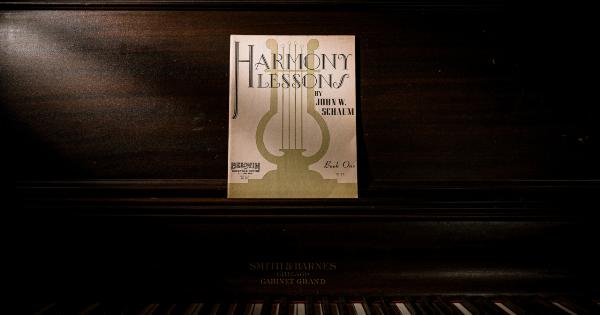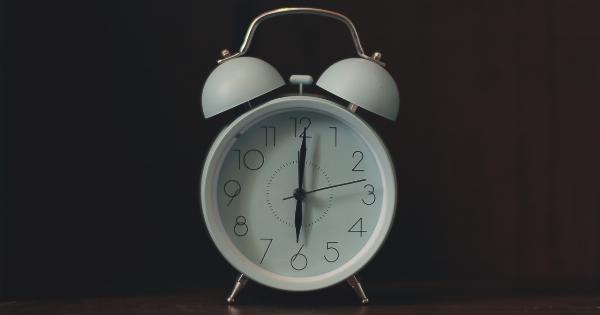Gymnastics is an incredible sport that requires immense skill, strength, and precision. Athletes push their bodies to the limit, performing jaw-dropping stunts that seem to defy the laws of physics.
But what if there was a gymnastics form that could alter time perception, allowing athletes to accomplish even more astonishing feats? This breakthrough in the world of gymnastics has the potential to revolutionize the sport and push its boundaries to new levels.
The Concept of Time Perception
Time perception refers to the subjective experience of time passing. We often feel that time flies when we’re having fun or drags on when we’re bored.
Our perception of time can be influenced by various factors such as attention, emotions, and external stimuli. While time is a universal concept, our subjective experience of it can vary greatly.
Scientists have long been fascinated by the idea of manipulating time perception. Various studies have explored how external factors can influence our perception of time.
For example, studies have shown that playing fast-paced music can make time seem to pass more quickly, while slow music can make it seem slower. Similarly, engaging in intense physical activities can alter our perception of time.
The Connection Between Gymnastics and Time Perception
Enter gymnastics, a sport that demands intense physical activity, focus, and precision. Gymnasts perform a series of incredible movements and stunts, creating a spectacle that captivates audiences worldwide.
The high-intensity nature of gymnastics may hold the key to altering time perception.
When gymnasts execute complex routines, they rely on a deep sense of focus and concentration. In this state of heightened awareness, their perception of time may shift.
Time may seem to slow down, allowing gymnasts to perform intricate moves with astonishing precision and timing. This altered perception can give gymnasts a competitive edge and allow them to push the boundaries of what was previously thought possible.
Exploring the Science Behind Gymnastics Time Perception
Research in the field of psychology has shed light on the connection between intense physical activity and time perception. When we engage in highly demanding physical tasks, our attention becomes more focused, and our perception of time can change.
This phenomenon is known as “flow state.”.
Flow state refers to a mental state where a person is fully immersed in an activity, feeling energized, focused, and completely involved. In this state, individuals often lose track of time and experience a sense of timelessness.
Flow state is often associated with peak performance and enhanced creativity.
Gymnastics, with its unique blend of physicality and artistry, offers the perfect environment for athletes to tap into the flow state.
When gymnasts perform routines flawlessly, they experience a timeless state where they are fully absorbed in the present moment. This altered perception of time allows them to execute complex movements with exceptional grace and precision.
The Implications for Gymnastics
The discovery of a gymnastics form that can alter time perception carries significant implications for the sport. Athletes can now strive to achieve a state of flow, where time seems to slow down while they execute mind-boggling maneuvers.
This breakthrough opens up new possibilities for gymnastics routines and raises the bar for what can be achieved in the sport.
Furthermore, altered time perception may also enhance the aesthetic appeal of gymnastics.
With time seemingly slowing down, spectators can marvel at the intricate details of each move, appreciating the athleticism and artistry that goes into every routine. This could attract a broader audience and increase the sport’s popularity.
Challenges and Limitations
As with any breakthrough, there are challenges and limitations to consider. While altered time perception can be advantageous for gymnasts, it also requires a high level of focus and concentration.
Maintaining this state of flow can be mentally and physically exhausting, and athletes may struggle to sustain it for extended periods.
Additionally, the altered time perception experienced by gymnasts may not translate perfectly to the spectators’ perspective. While gymnasts may feel as though time has slowed down, the audience may still perceive time as moving at a normal pace.
This could create discrepancies in how routines are perceived and judged by different individuals.
Future Research and Applications
The discovery of a gymnastics form that alters time perception opens up exciting possibilities for future research and applications.
Scientists can delve deeper into understanding the mechanisms behind altered time perception and explore ways to extend and enhance this phenomenon.
Furthermore, other sports and fields could benefit from this breakthrough. Activities that require focus and precision, such as figure skating or professional dance, may also find value in tapping into altered time perception.
This concept may even have applications beyond athletics, such as in performing arts or even everyday tasks where timing and precision matter.
Conclusion
Gymnastics has always been a sport that pushes boundaries and defies expectations. The discovery of a gymnastics form that alters time perception takes this to a whole new level.
Athletes can now strive to achieve a state of flow, where time seems to slow down, allowing them to execute gravity-defying moves with unparalleled precision.
This breakthrough not only revolutionizes gymnastics but also highlights the remarkable connection between physical activity and time perception.
It opens doors to new research and applications in various fields, paving the way for enhanced performances, artistic expressions, and our understanding of the fundamental nature of time.































